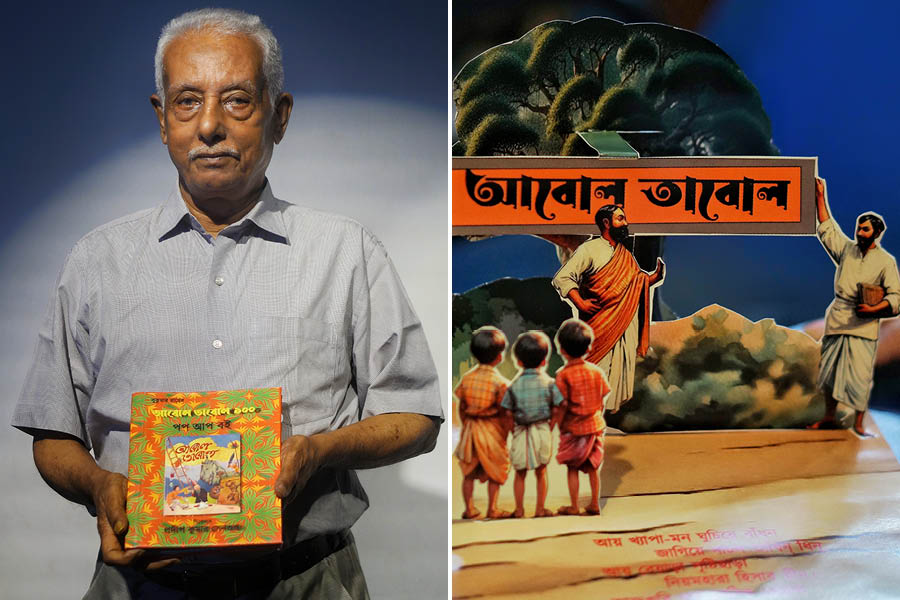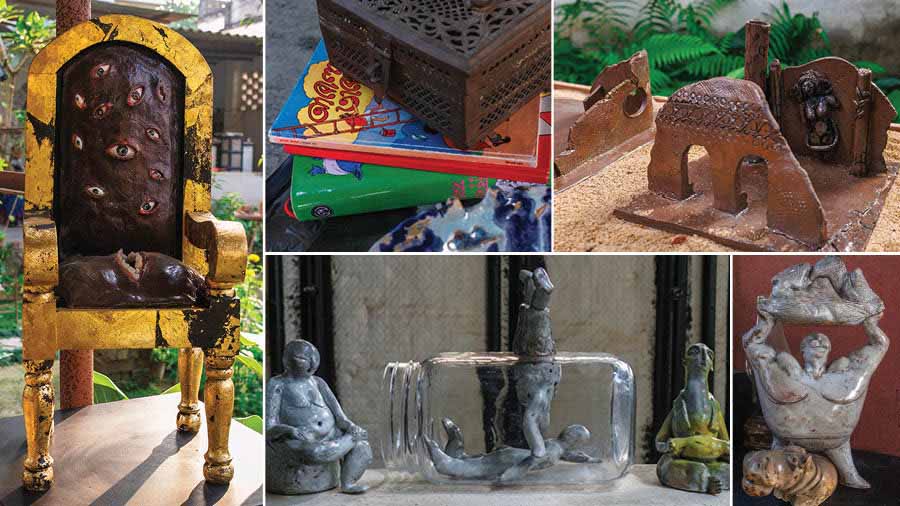Keu ki jano sadai keno Bombagarher raja/ Chhobir frame-ey bandhiye rakhe aamswotto bhaja?
Huko mukho hyangla bari tar Bangla/Mukhe tar hashi nei dekhechho?
Jodi Kumropotash nache/ Khobordar eso na keu astaboler kachhe
Ramgorurer chhana haste tader mana/Hashir kotha shunle bole hashbo na na na na
What if one of these characters sprung at you while you read the lines that leave you in splits? That’s just what septuagenarian Pradip Sengupta had planned for his eight-year-old granddaughter.
The pop-up edition of Sukumar Ray’s Abol Tabol created by Sengupta — his second such venture after Chhorar Chhobi in 2017 — was ready to be handed over to granddaughter Myra Sarkar just in time to coincide with the centenary of Abol Tabol.
Sengupta and his family recently showcased his labour of love at Alliance Française du Bengale, Kolkata. A documentary showcasing the behind-the-scenes of the making of the book was also screened on the occasion. The film is the brainchild of Subha Das Mollick, who also directed it

(From left) Child artistes Ritisha Dutta and Myra Sarkar (Sengupta’s granddaughter), Pradip Sengupta and Sunandan Roy, the publisher of SAMPARK
Sengupta forayed into making pop-up books to get his granddaughter, who then lived in the US, interested in Bengali books. He wanted her to be familiar with the popular rhymes children in Bengal grow up listening to. The loving dadu’s hard work has borne fruit as granddaughter Myra is now an avid reader of Bengali literature and has even collaborated with her grandpa for his documentary, helping him select photos for Abol Tabol.
In the film, the eight-year-old has recited parts from Abol Tabol and is seen listening to the history of the Ray family, dating back to the time of Upendrakishore Ray Chowdhury and touching Satyajit Ray, the printing press and the making of the Sandesh magazine with keen interest.
“I selected Abol Tabol because Myra, who is currently in Kolkata and studying in a school here, has the book in her curriculum,” shared Sengupta, introducing the book at the event.
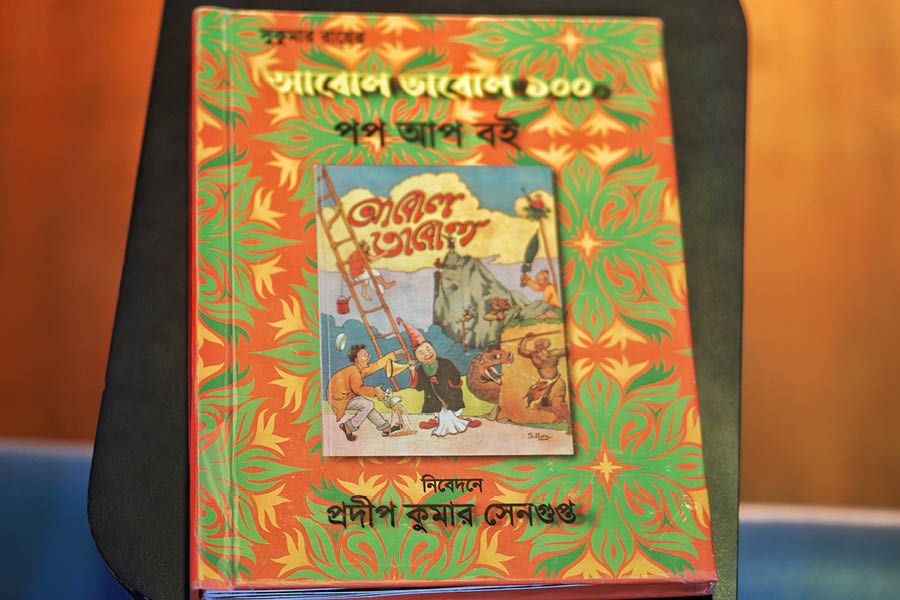
The pop-up version of ‘Abol Tabol’ by Sukumar Ray, created by Pradip Sengupta
An artist with a keen yearning to learn, Sengupta is now well-versed in artificial intelligence and photo editing softwares and has taken the assistance of AI and Photoshop to create the scenes from Abol Tabol. The undertaking, which required mental storyboarding, reading the text, conceptualising the scenes for the eight photos, took the doting grandpa about a year. He has created a 180-degree pop-up version of Abol Tabol in colour format, and is currently on the lookout for a publisher.
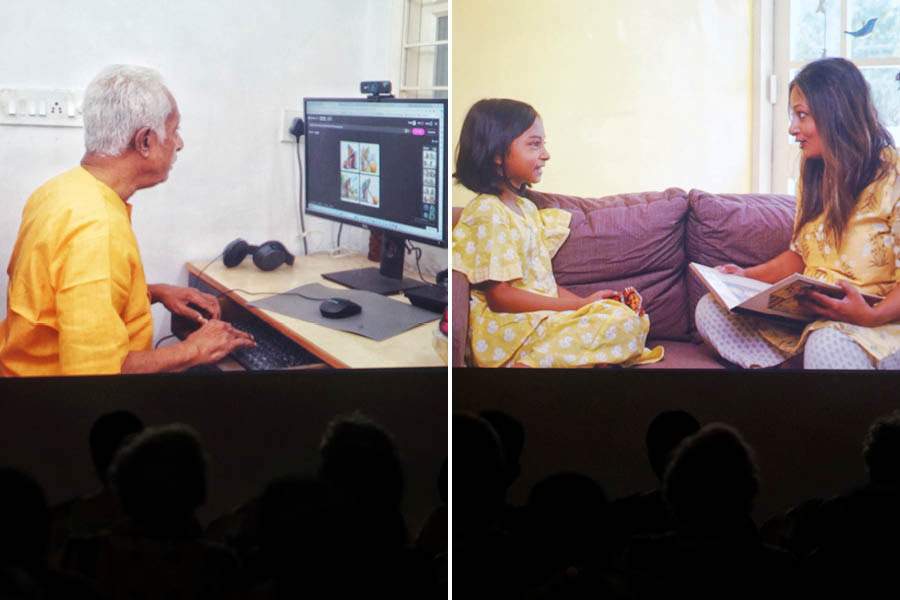
(From left) Sengupta designing the ‘Abol Tabol’ pop-up; Myra with her mother learning about Sukumar Ray and the Ray family
Abol Tabol was first published in 1923 from U. Ray and Sons, and turned 100 years old in 2023.
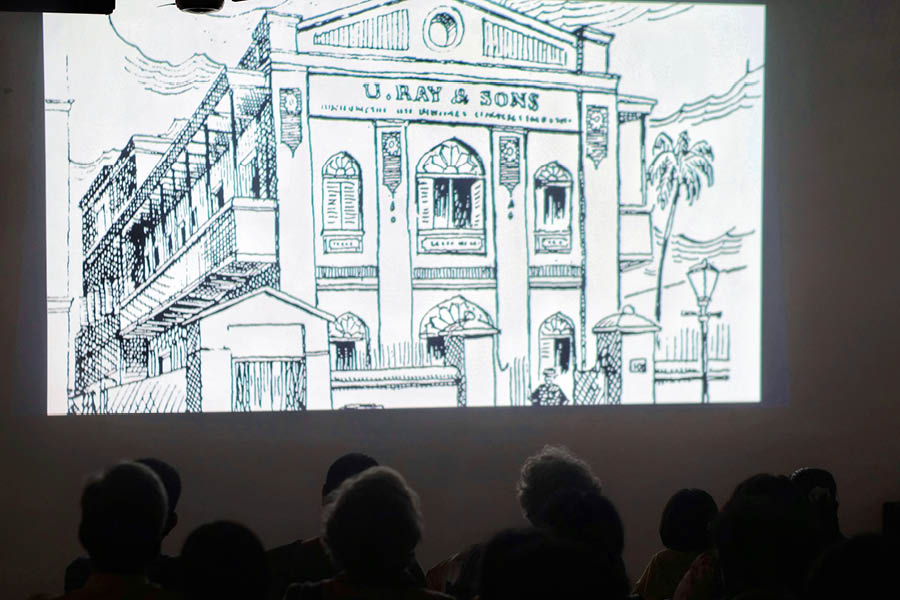
A graphic representation of U. Ray and Sons from the documentary
For the pop-up version, Sengupta not only conceptualised and made the scenes but also created the book. Taking high-resolution printouts, he cut each photo with precision, created the page layout, and placed the snippets forming a 3-D effect.

‘Bombagarher Raja’, as conceptualised by Pradip Sengupta
The documentary starts with a grandfather clock ticking before the audience is taken to Athenaeum Institution, the erstwhile residence of the Rays and a strong element in the documentary. The film begins with Myra reciting Aye re bhola and later innocently prompting Alexa to play Bombagarher Raja, as the audience broke into a laugh.
Sengupta can be seen brainstorming to source bits and pieces to make the frames. “Tahole rani hoye gelo, ranir mathay ekta balish pattey hobe…” (The queen is ready, I will have to add a pillow beneath her head — a scene from Bombagarher Raja) — he was captured weaving the scenes in front of his desktop at his Kolkata home, with his granddaughter balancing play, helping her dadu, and learning chhora (poems).
The documentary had several other poems from Abol Tabol, like Hukomukho Hyangla, recited by Ritisha Dutta, the other child artiste featuring in it.
Creating the frames was not easy for Sengupta. Giving prompts like ‘monkey man’ would not readily create a Sukumar Ray character. Conjoining elements from various photos and a tireless trial and error dedication resulted in the fruit of his labour.
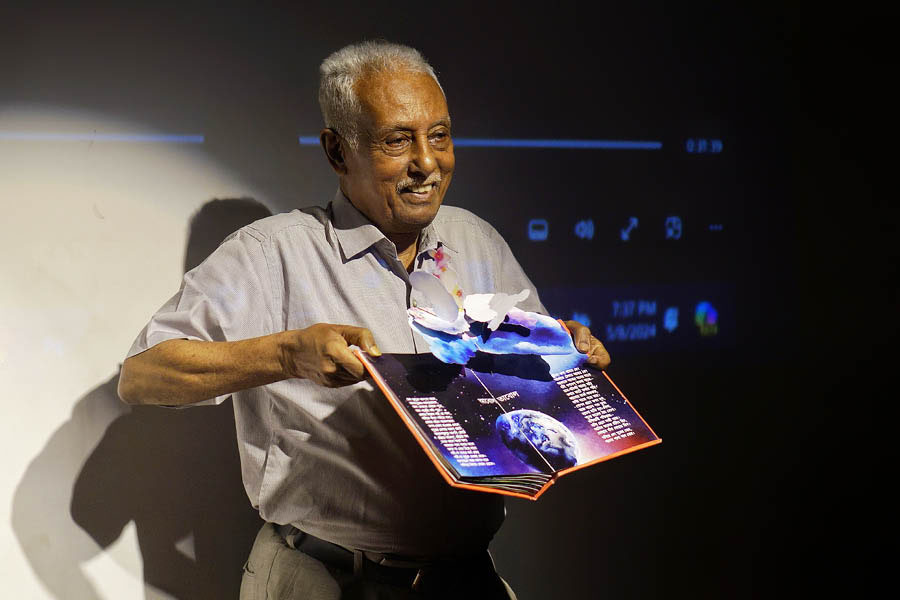
A happy grandfather with a priceless gift for his granddaughter — Pradip Sengupta displaying the ‘Abol Tabol’ pop-up
“Abol Tabol has been able to capture the essence of childhood for so many years. It is priceless to Bengali literature,” shared the creator in the documentary, stressing on the importance of ensuring the longevity of books like Abol Tabol. The documentary also featured Sunandan Roy, the publisher of SAMPARK, who shared nuggets on the history of U. Ray and Sons and Sandesh.
